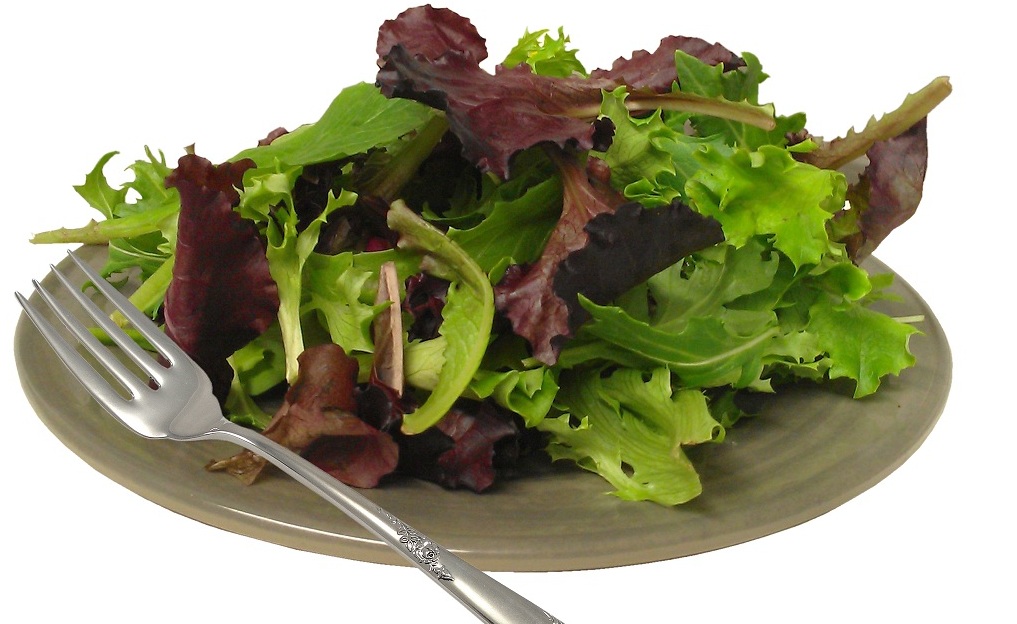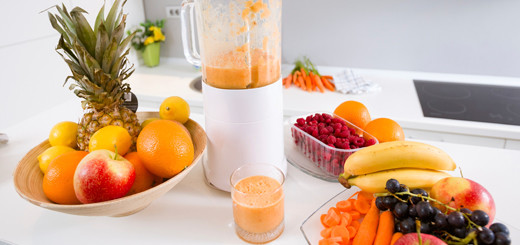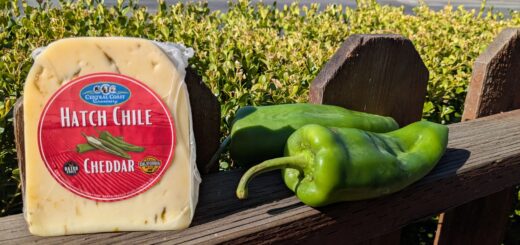Top Health Benefits of Salad Spring Mix

Geri Wohl, CNC www.bettereatingcoach.com
It’s the New Year and you’re working on that New Year’s resolution to eat healthier. What is the food that most people will eat? A salad, of course. But many people opt to make their salad with the most common lettuce, iceberg. Iceberg has a nice sweet taste but doesn’t compare nutritionally to other lettuce varieties that are more nutrient dense. So let’s focus on some better choices that you can incorporate into your diet. While by no means complete, some of these salad greens include green and red leaf lettuce, romaine, mizuna, arugula and butterhead.
All lettuce, spinach and other salad greens are low in calories. They only have about seven calories per cup. The calories in salads typically come not from the greens but rather from dressings. Because they are high in volume and low in calories, salad greens help you to satisfy your appetite by beginning the digestive process so you tend to consume fewer calories for the remainder of your meal. Greens also have no cholesterol and very little sodium so they are considered heart-healthy.
Greens are rich in nutrients, especially vitamin A, vitamin C, beta carotene, calcium, folate and dietary fiber. In addition, these plants also contain phytonutrients that act as antioxidants in our body neutralizing free radicals that cause chronic diseases. While these phytonutrients are beneficial to us, they also provide protection to the plant against such things as pests and UV radiation. A simple rule of thumb when choosing which greens to use is the darker the color, the more nutrients. Below is a table adapted from Colorado State University illustrating some nutrient values.
| Nutrient | Unit | Iceberg | Green Leaf | Red Leaf | Romaine | Butterhead | Spinach |
| Vit. A | IU | 502 | 7405 | 7492 | 8710 | 3312 | 2813 |
| Vit. C | mg | 2.8 | 9.2 | 3.7 | 4 | 3.7 | 8.4 |
| Vit. K | mcg | 24 | 126 | 140 | 103 | 102 | 145 |
| Vit. B6 | mg | 0.04 | 0.09 | 0.10 | 0.07 | 0.08 | 0.10 |
| Folic acid | mcg | 29 | 38 | 36 | 136 | 73 | 58.2 |
| Iron | mg | 0.41 | 0.86 | 1.2 | 0.97 | 1.24 | 0.80 |
| Potassium | mg | 141 | 194 | 187 | 247 | 238 | 167 |
| Beta carotene | mcg | 229 | 4443 | 4495 | 5226 | 1987 | 9940 |
| Luteine & zeaxanthin | mcg | 277 | 1730 | 1724 | 2312 | 1223 | 2040 |
Many of the lettuces grown are cool weather crops with short growing periods. They can be found at farmer’s markets or local supermarkets, or you can even grow your own. There are different stages of greens. Micro-greens are plants that are very young with only 1-2 leaves. These micro-greens are usually harvested within 10-14 days of planting the seeds. Baby greens grow for an additional two weeks. The leaves are small but full of flavor. The leaves usually are much more tender than the mature greens. Since the plant is still putting out lots of energy into plant production, these baby greens are a bounty of nutrients. Lastly are the mature greens that we are probably most familiar with. You definitely want to incorporate the mature greens into your diet, but studies are suggesting that baby and micro-greens contain more of certain nutrients than their mature counterparts.
 It’s extremely important that these baby greens are bought organically or if growing your own, not sprayed with any chemical pesticides. As you will be eating the leaf where the pesticide will be sprayed, you want to avoid consuming the toxic materials in pesticides. Once the greens are brought home, immersing the greens in a bowl of cold water will help loosen any residual dirt. Immersing the baby greens into a vinegar and water solution for five minutes will help reduce possible contamination from microorganisms. To make the vinegar/water solution, mix ½ cup distilled white vinegar with two cups water. After the five-minute soak, immerse the greens in plain water and then blot dry or spin to eliminate any excess water.
It’s extremely important that these baby greens are bought organically or if growing your own, not sprayed with any chemical pesticides. As you will be eating the leaf where the pesticide will be sprayed, you want to avoid consuming the toxic materials in pesticides. Once the greens are brought home, immersing the greens in a bowl of cold water will help loosen any residual dirt. Immersing the baby greens into a vinegar and water solution for five minutes will help reduce possible contamination from microorganisms. To make the vinegar/water solution, mix ½ cup distilled white vinegar with two cups water. After the five-minute soak, immerse the greens in plain water and then blot dry or spin to eliminate any excess water.
All these baby greens contain chlorophyll. Chlorophyll is the component responsible for energy production in the plant. It also plays a role for us in detoxification of the blood and the liver. Chlorophyll is believed to remove environmental toxins such as heavy metals and pesticides from our bodies. It also acts to purify the bowels since these greens are full of fiber. For more about chlorophyll, see my article http://www.bettereatingcoach.com/121112-its-good-to-be-green.html.
A couple of my favorite baby greens are arugula and mizuna. Arugula is full of phytochemicals that may help counter the effects of estrogen-related cancers and may protect against other types of cancer by inhibiting cell growth. It also contains compounds that are both immune and liver supportive. It’s rich in vitamin A, folic acid, vitamin K and the B vitamins. It has a slightly peppery taste that adds a nice accent to salad mixtures. For a delicious salad recipe with arugula, try my roasted beet salad with arugula at http://www.bettereatingcoach.com/recipe-late-springearly-summer-2012.html. Mizuna is a Japanese mustard green with a tangy flavor and a fun texture that is different from most greens. It’s high in folic acid, vitamin A and the carotenoids. It contains powerful antioxidants that may help in preventing certain cancers. Try using mizuna in my pomegranate walnut salad, http://www.bettereatingcoach.com/recipe-fall-2012.html.
Each of the lettuces and baby greens has different flavors. So have fun experimenting with the different mixtures of baby greens. As you can see from the table above, no one green will have the highest level of nutrients. So mix and match and see what appeals to your taste buds.











